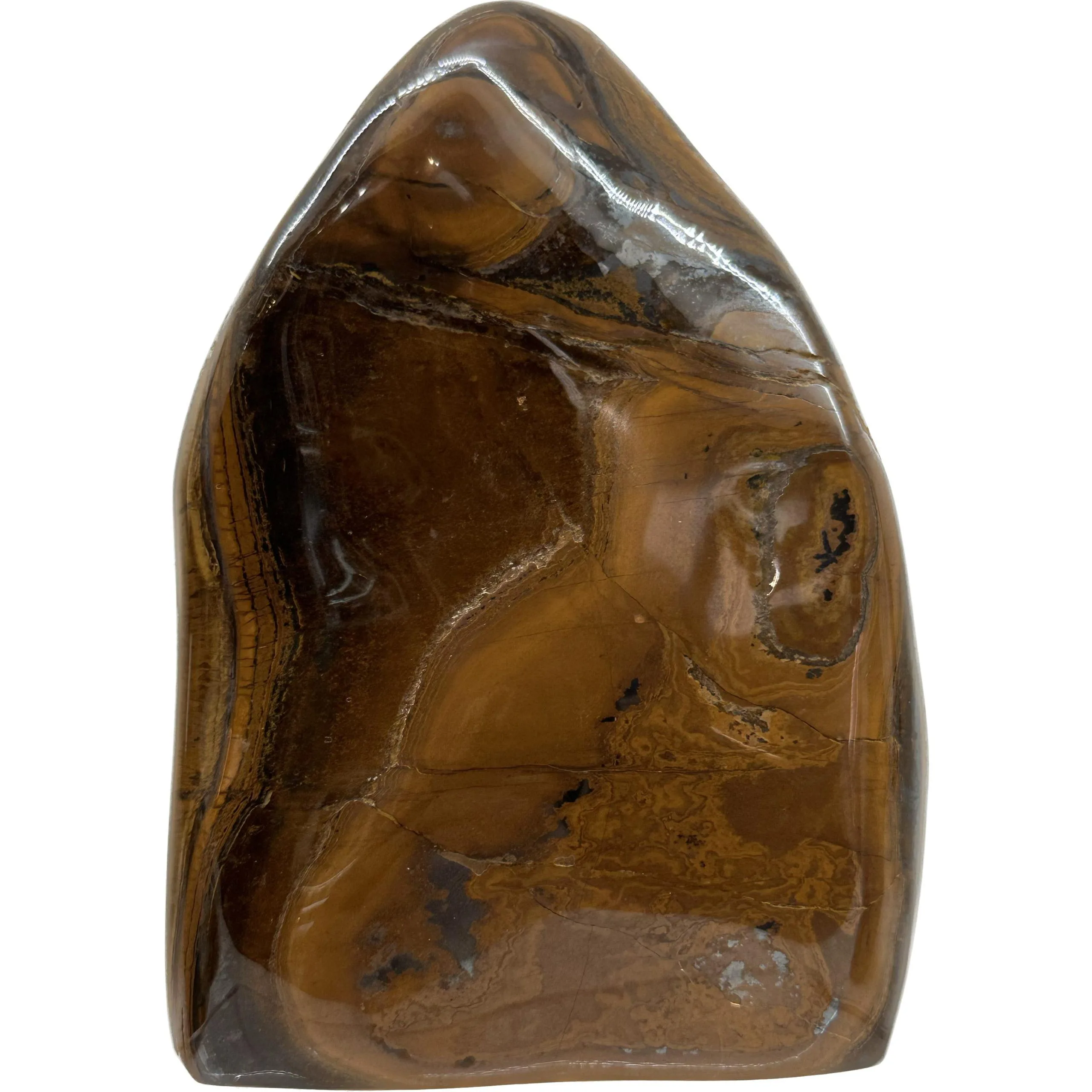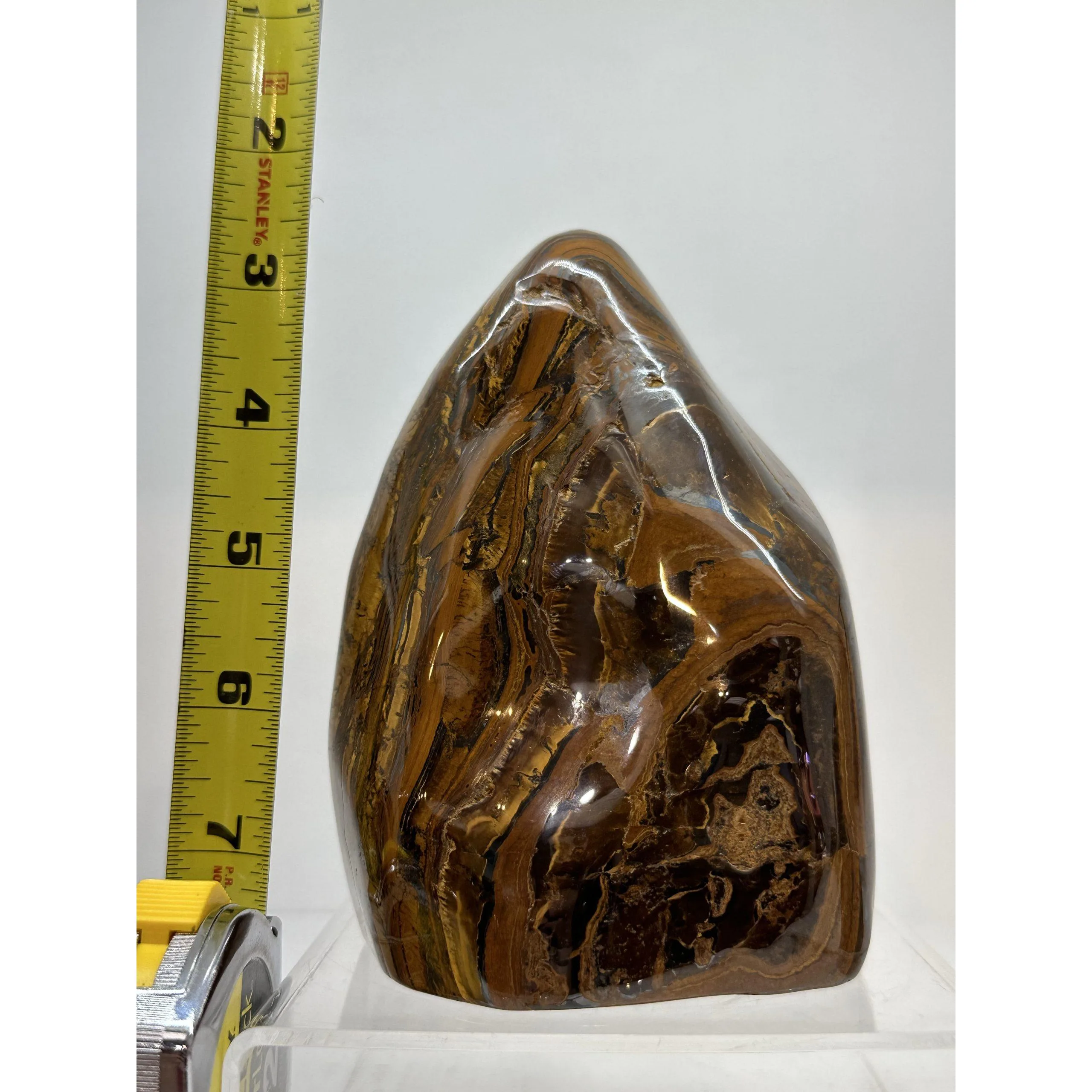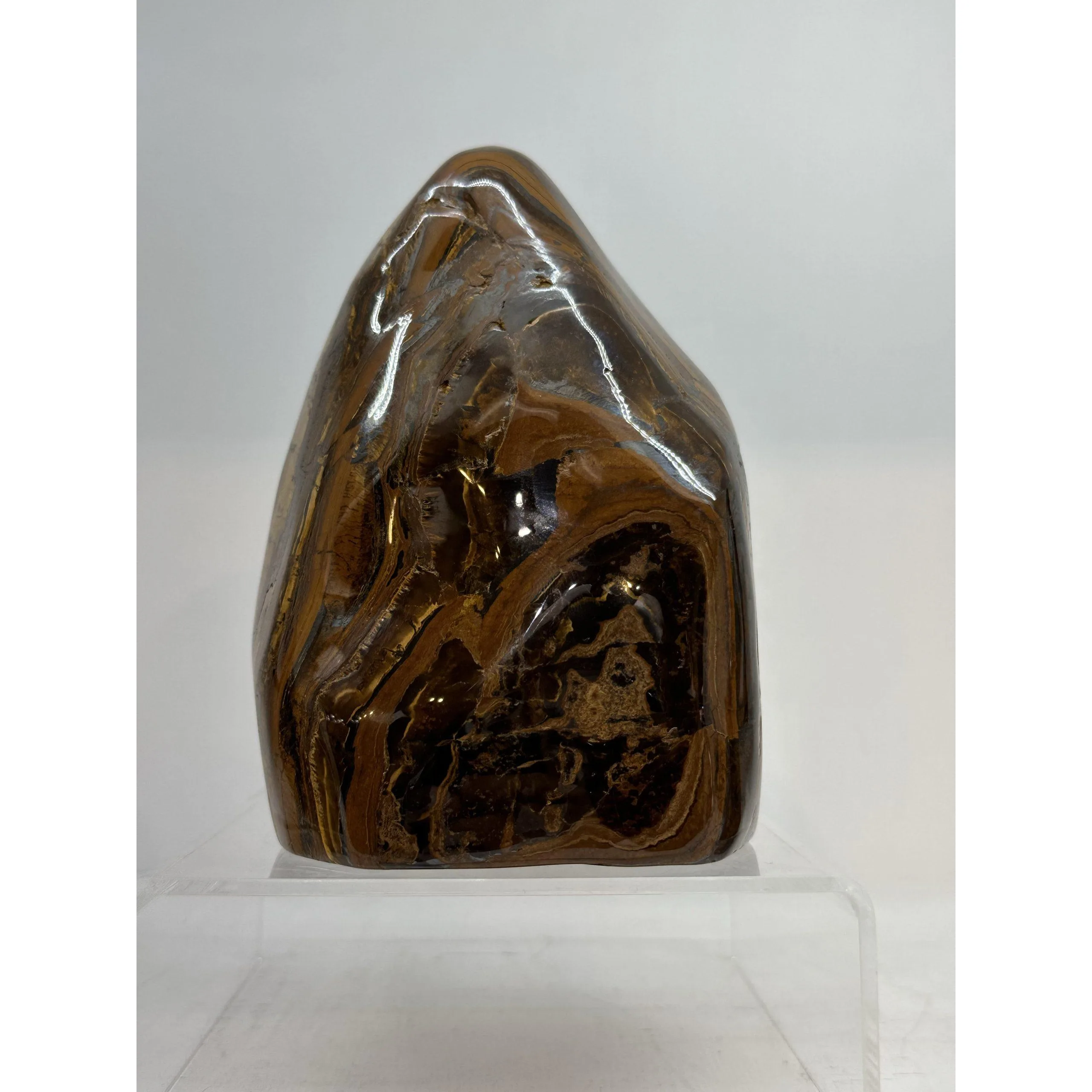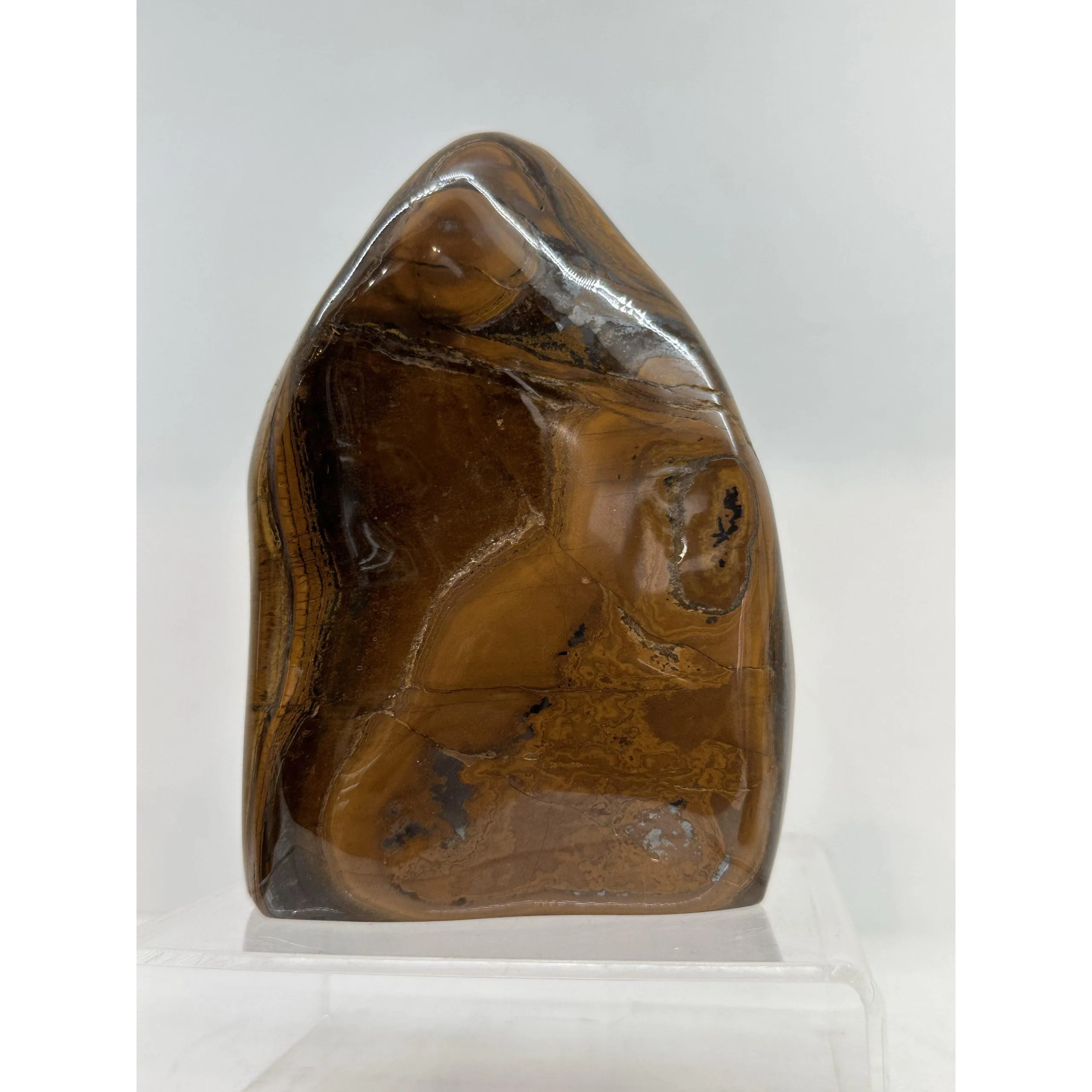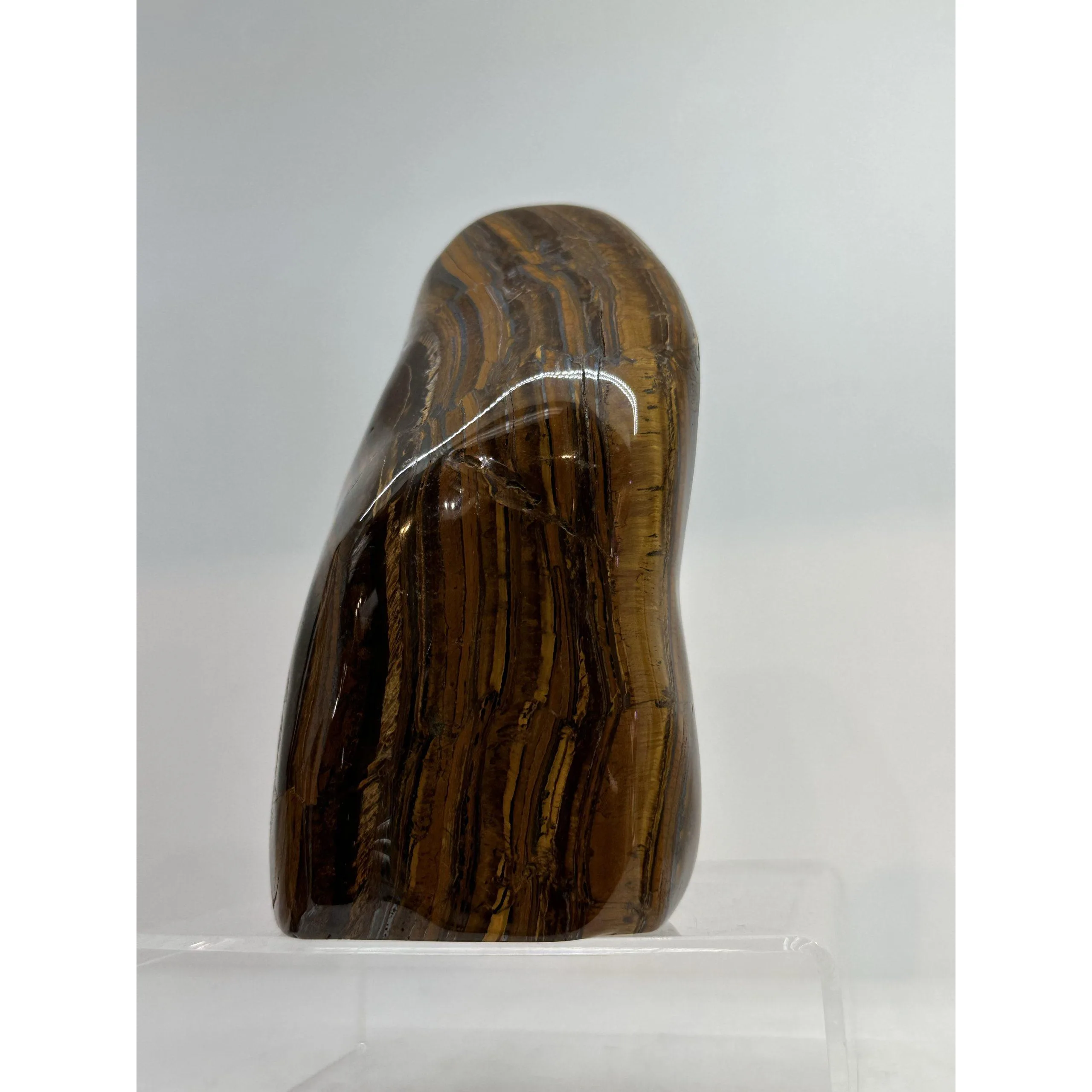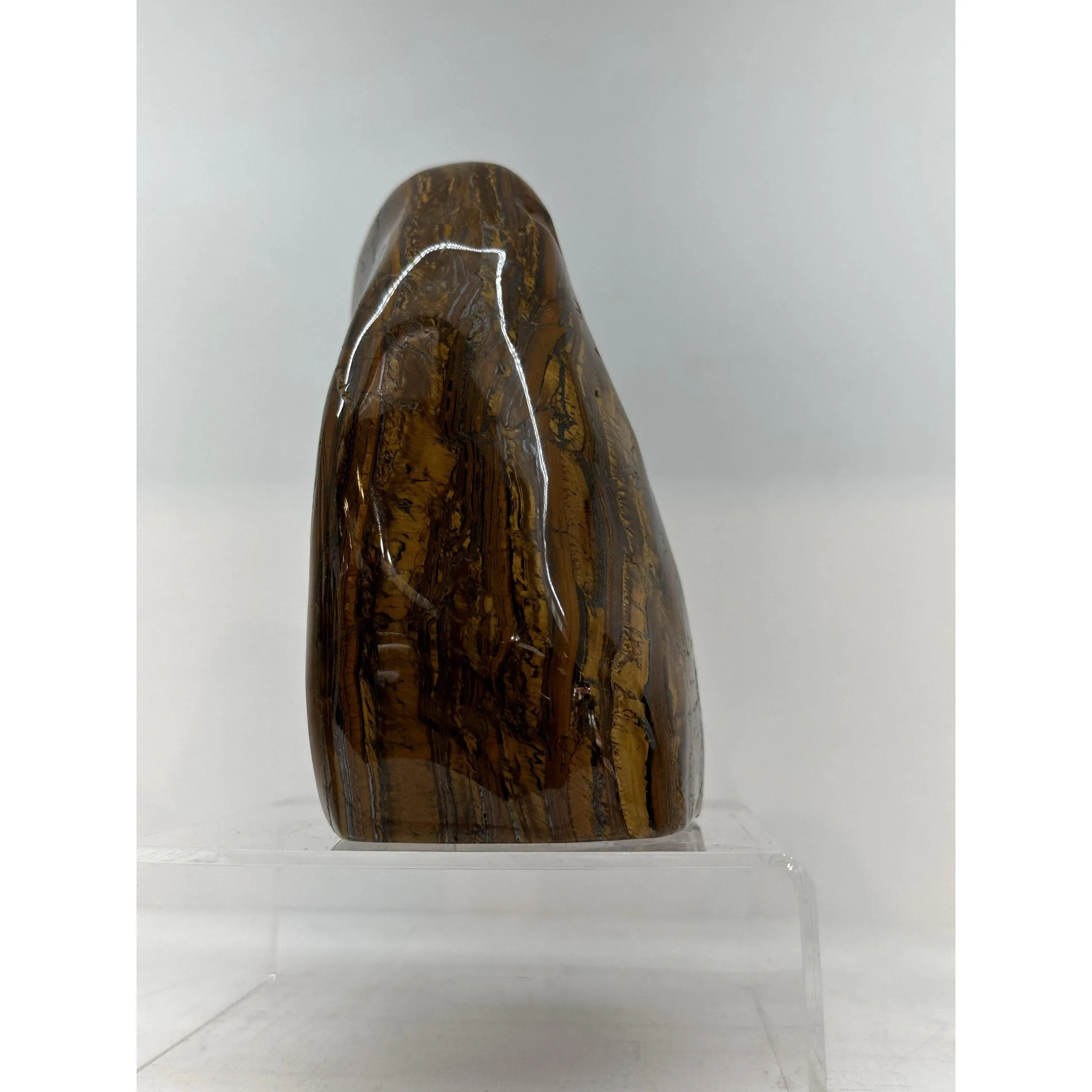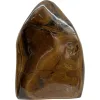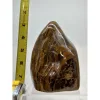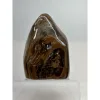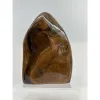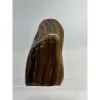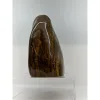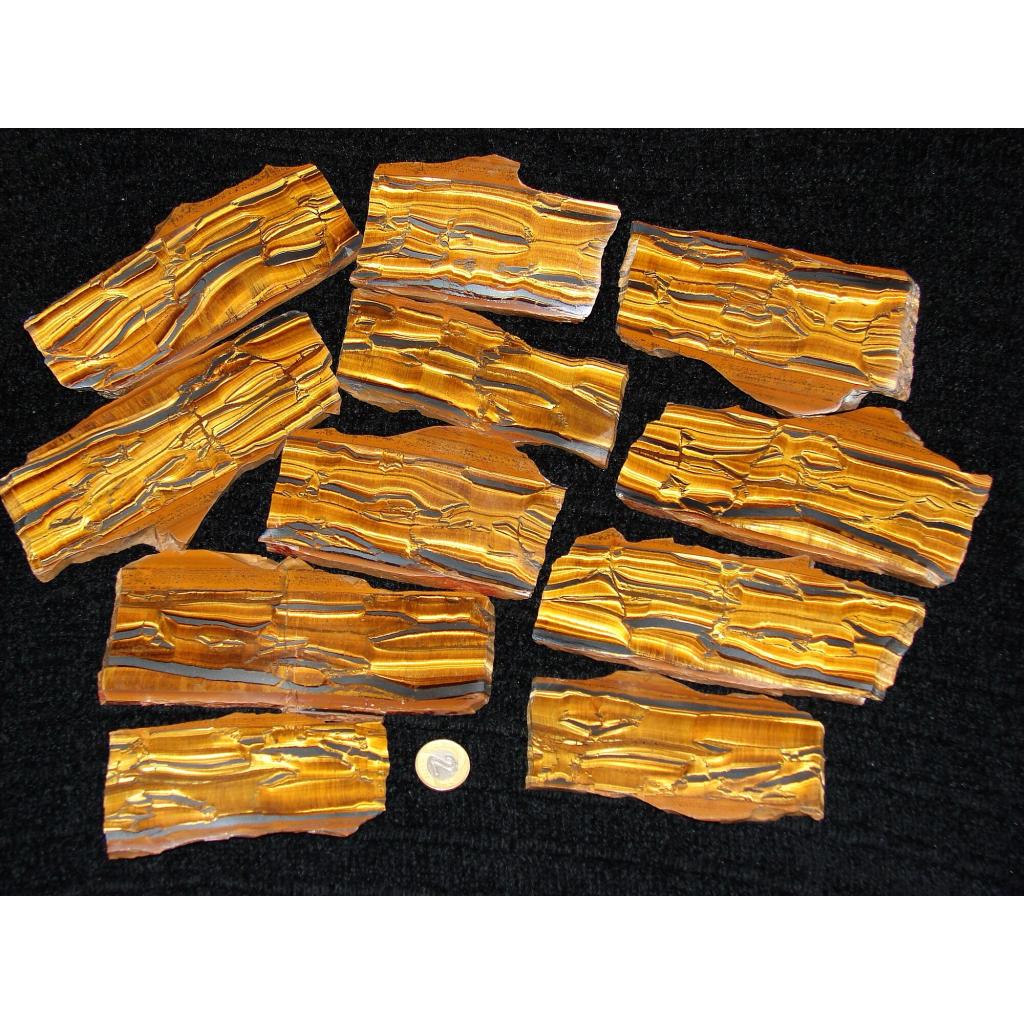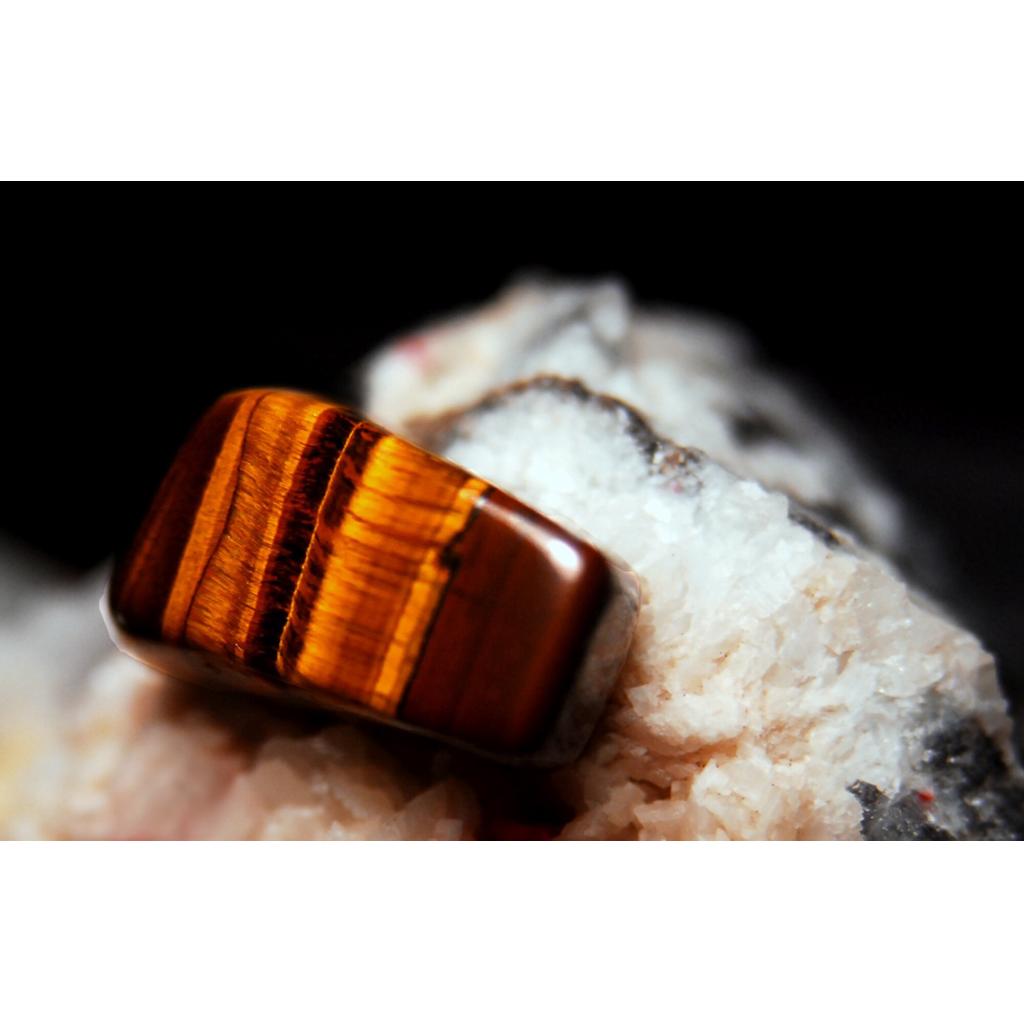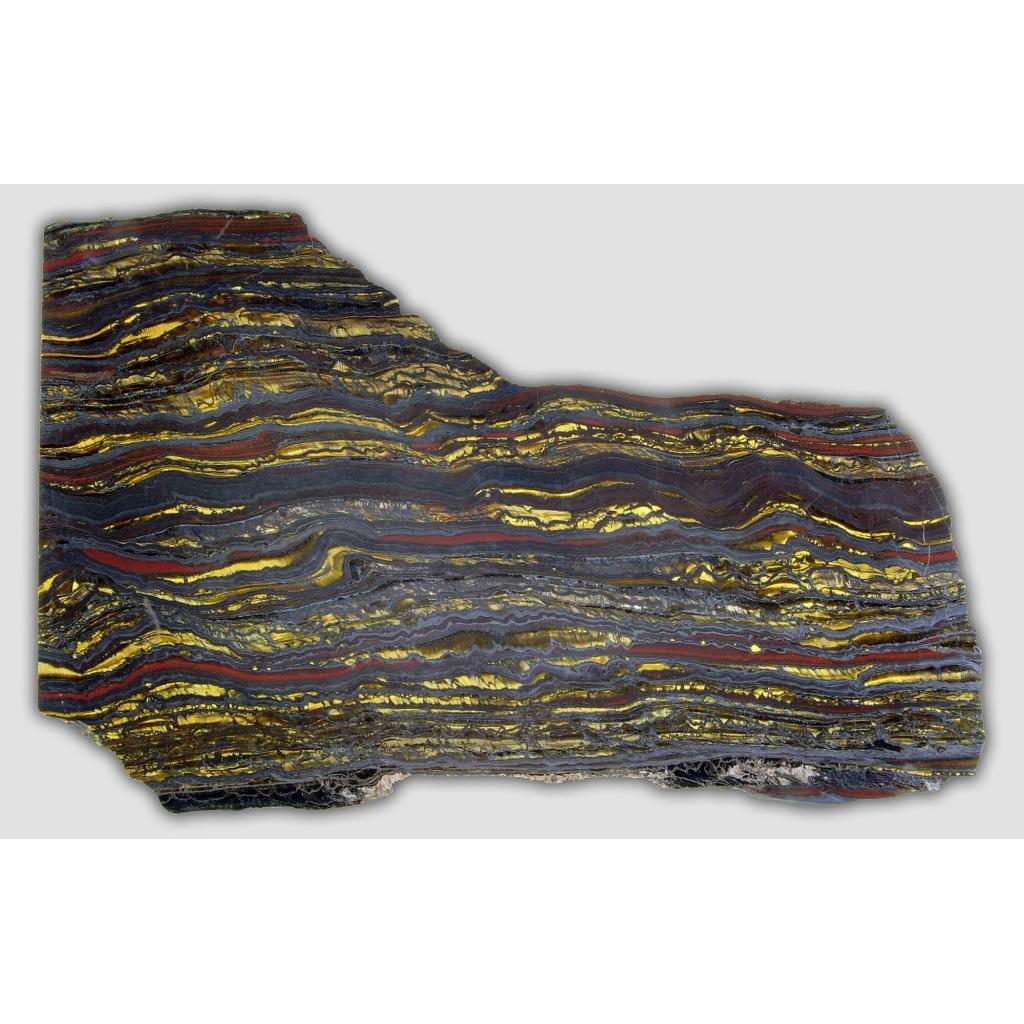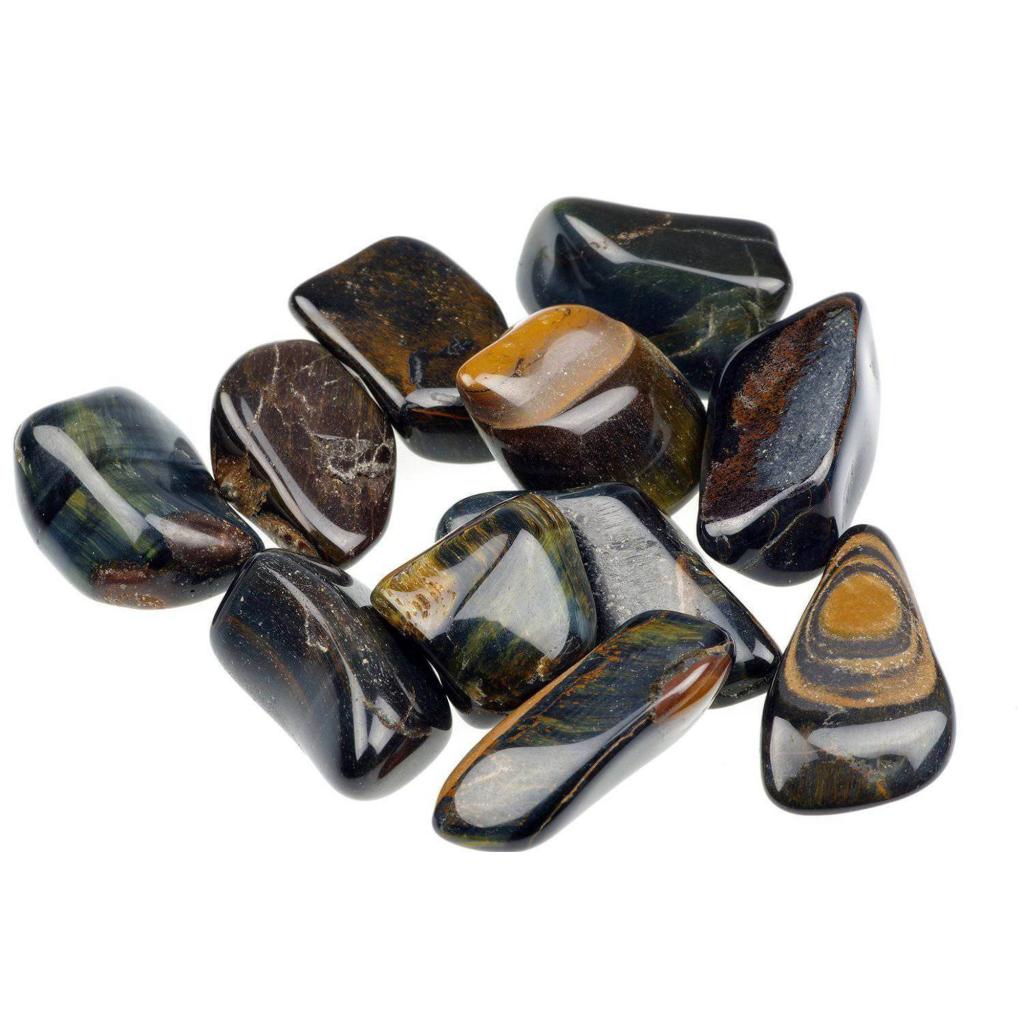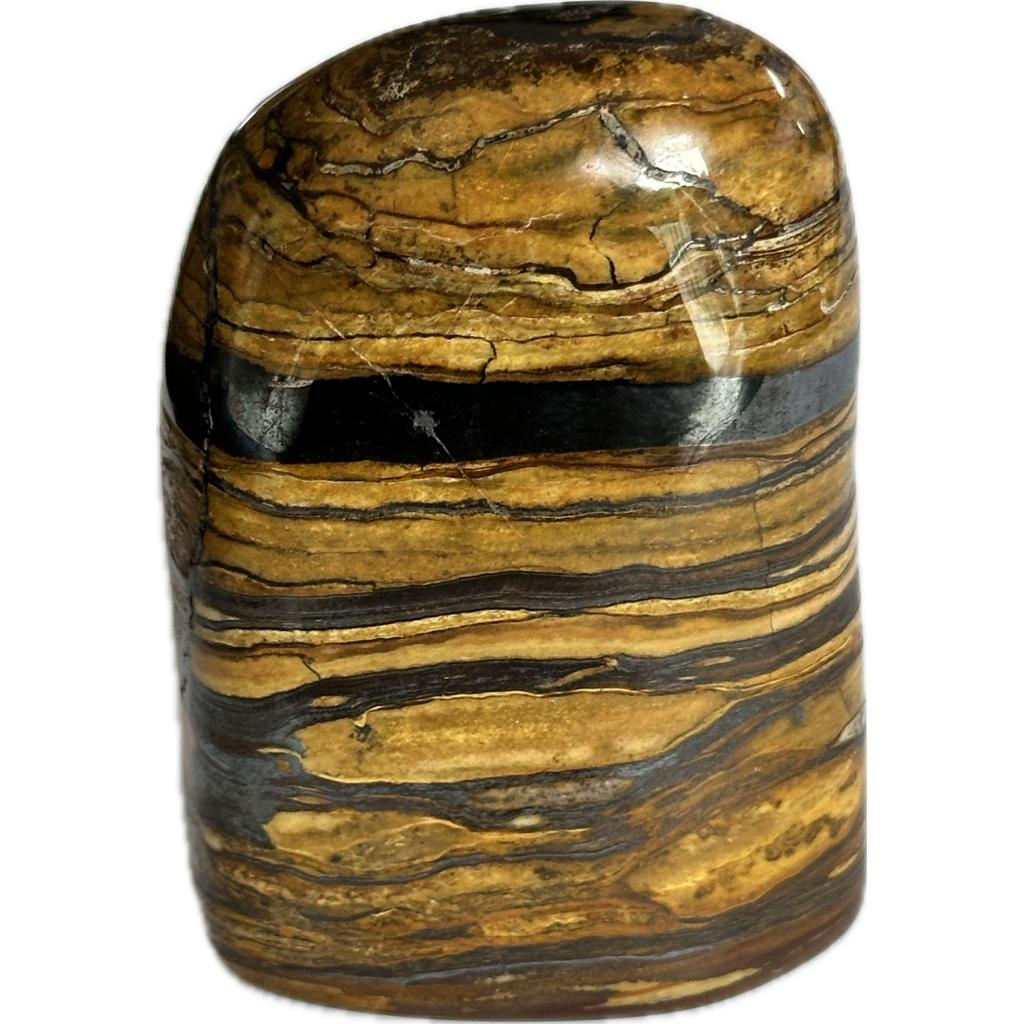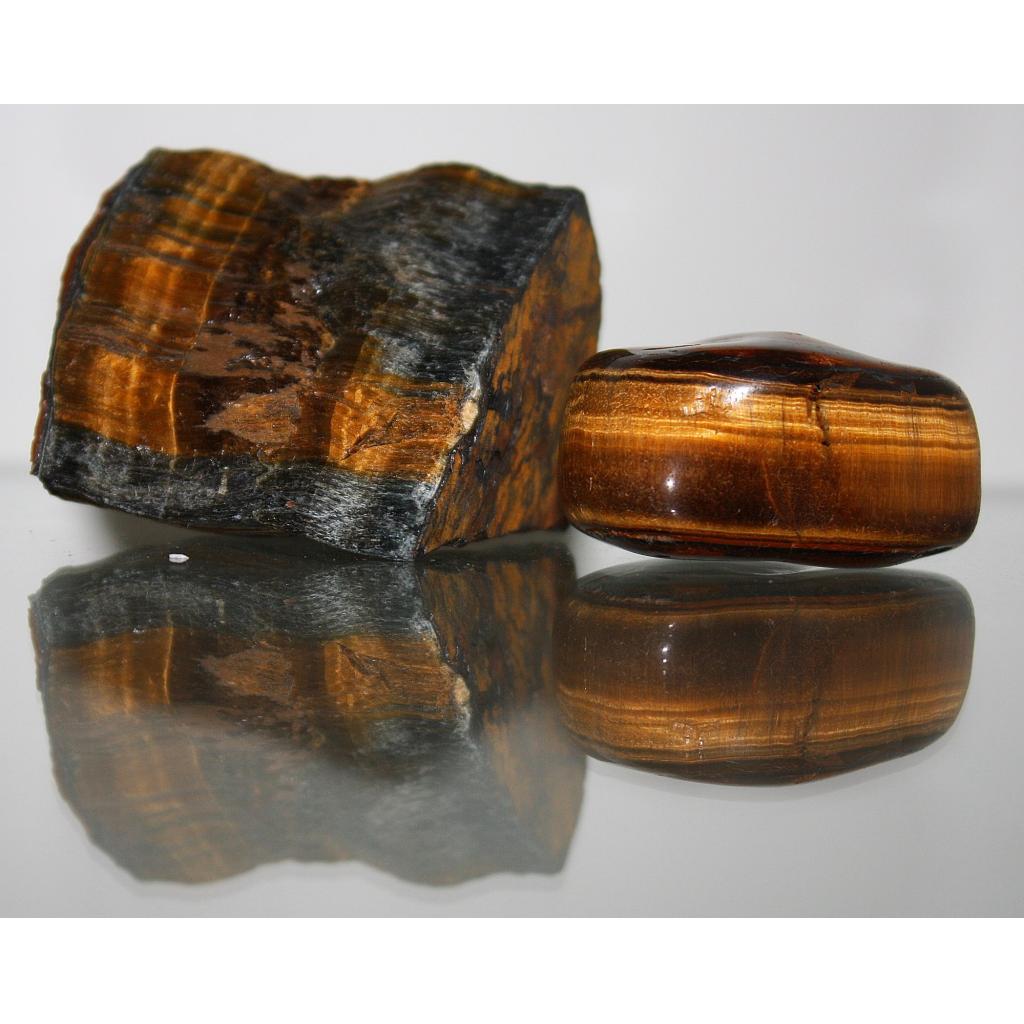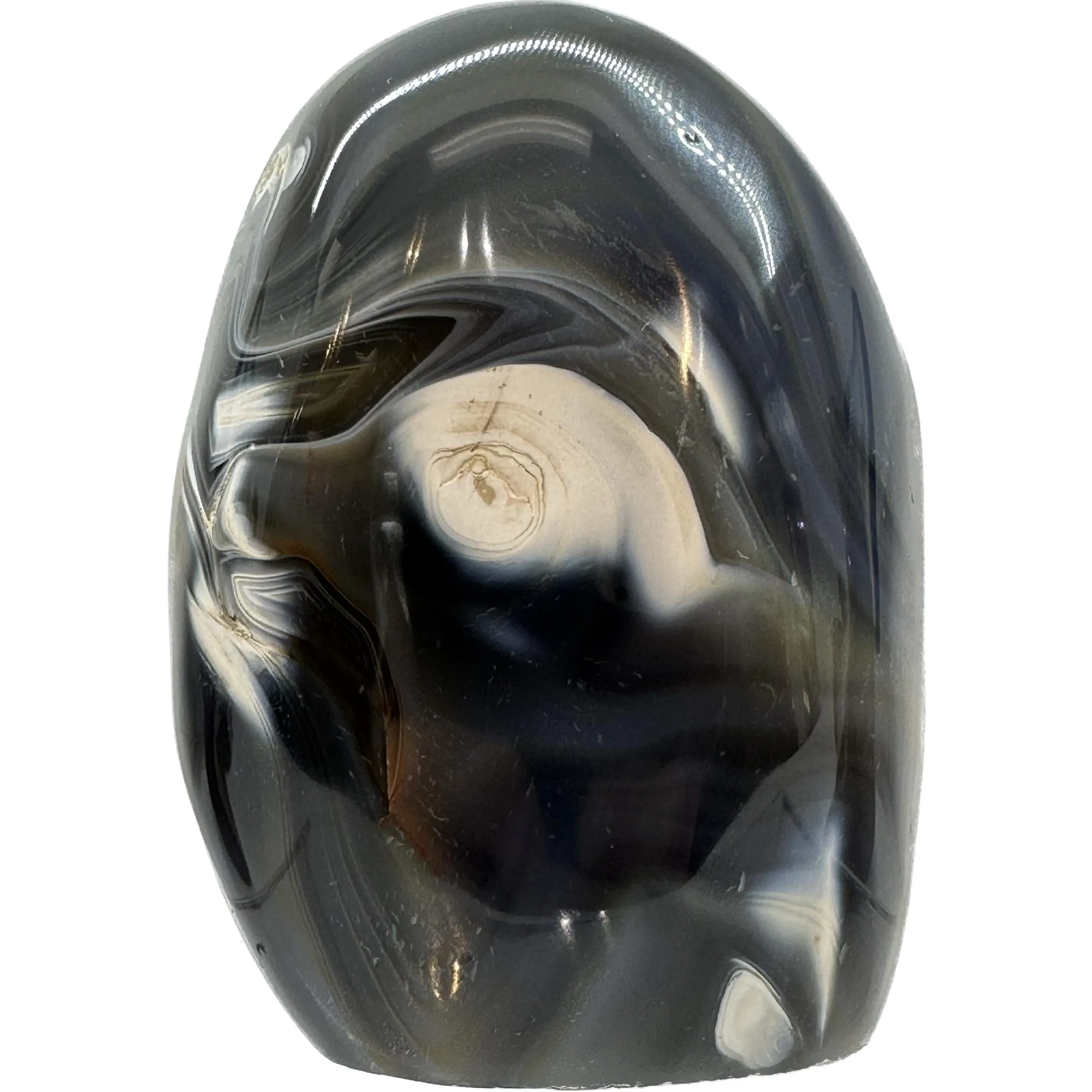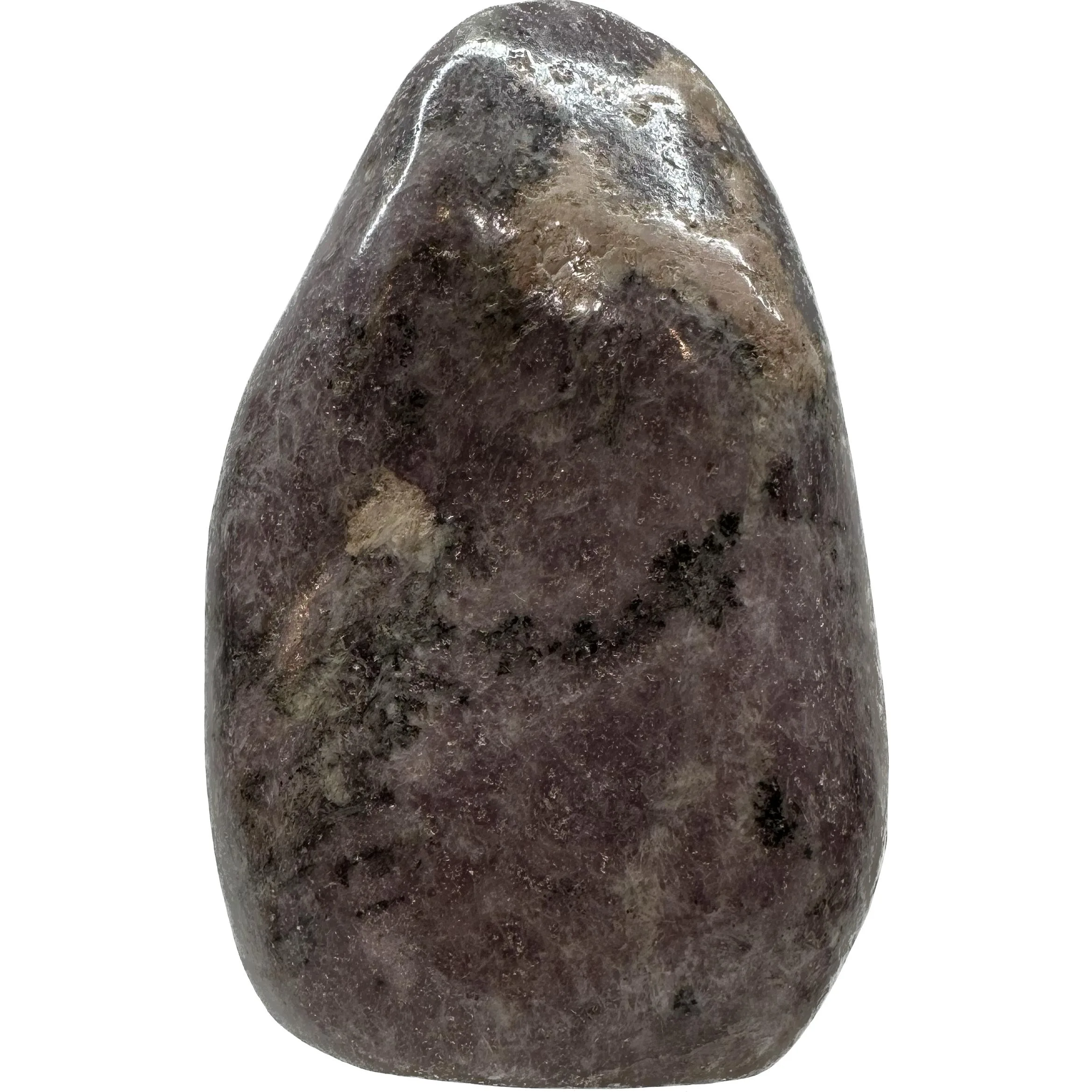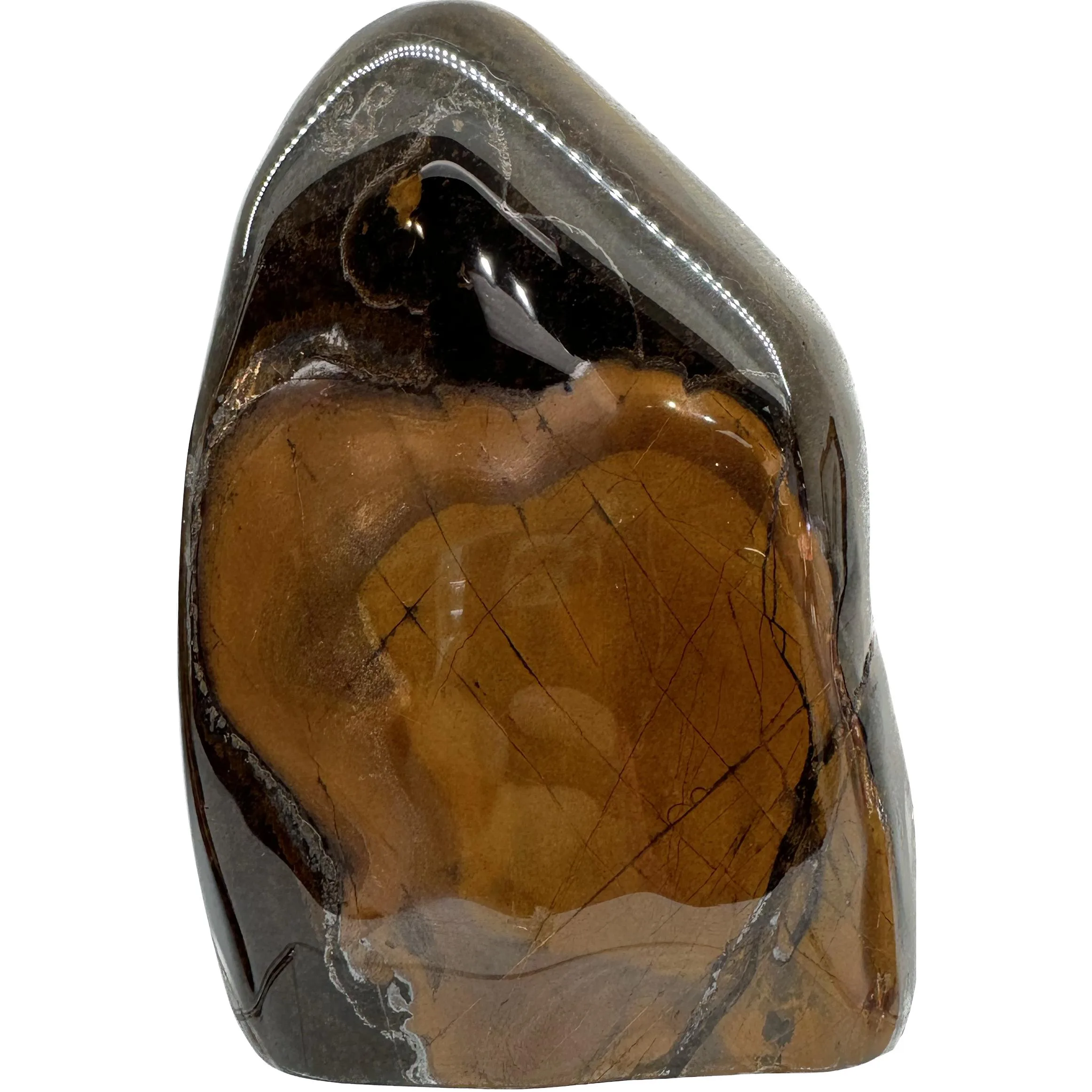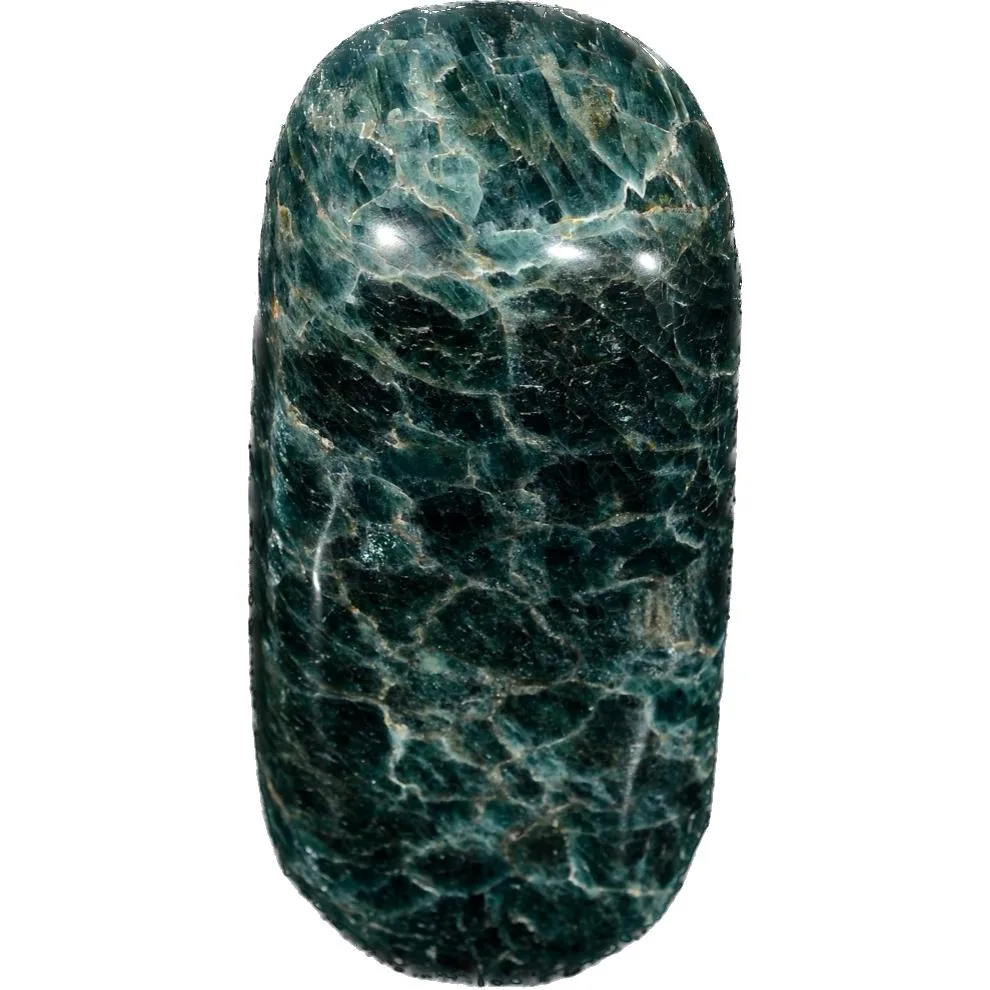Tiger eye and tiger iron are two fascinating gemstones known for their striking appearance and unique properties. Both are formed through natural processes and have been valued for centuries for their beauty and perceived metaphysical properties. In this comprehensive guide, we will delve into the origins, characteristics, uses, and cultural significance of tiger eye and tiger iron.
Tiger Eye:
Tiger eye is a chatoyant gemstone characterized by its silky luster and bands of golden to reddish-brown color. It belongs to the quartz group of minerals and is primarily composed of silicon dioxide (SiO2).
Origins: Tiger eye is formed through a process called pseudomorphism, where one mineral replaces another while retaining the original structure. It typically begins as fibrous crocidolite, a type of asbestos mineral. Over time, the crocidolite fibers are replaced by quartz through a process known as silicification. The resultant material is what we know as tiger eye.
Characteristics: The most distinctive feature of tiger eye is its chatoyancy, or ‘cat’s eye effect,’ which is caused by the reflection of light off the parallel fibrous structures within the stone. This effect creates a shimmering band of light that moves across the surface of the gemstone when it is rotated.
Tiger eye commonly exhibits bands of golden-yellow to reddish-brown color, often with a silky or wavy appearance. These colors are attributed to the presence of iron oxide within the quartz matrix.
Uses: Tiger eye has been prized for centuries for its aesthetic appeal and perceived metaphysical properties. In ancient civilizations, it was often used for ornamental purposes, such as in jewelry, amulets, and decorative objects.
In contemporary times, tiger eye remains a popular gemstone for jewelry, particularly in beads, cabochons, and pendants. It is also used for carvings, cameos, and inlay work.
Beyond its decorative uses, tiger eye is believed by some to possess various metaphysical properties, including promoting strength, courage, and protection. It is thought to enhance confidence, willpower, and clarity of thought.
Cultural Significance: Throughout history, tiger eye has been associated with power, wealth, and protection. In ancient Egypt, it was often carved into amulets and talismans to ward off evil spirits and bring good fortune to the wearer. The stone was also used in burial rites to ensure safe passage to the afterlife.
In Chinese culture, tiger eye is associated with the tiger, a symbol of strength and bravery. It is believed to bring luck and prosperity to those who possess it.
In contemporary metaphysical practices, tiger eye is often used for grounding, balance, and protection against negative energies. It is associated with the solar plexus chakra and is said to promote vitality and self-confidence.
Tiger Iron:
Tiger iron is a unique gemstone comprising layers of tiger eye, hematite, and red jasper. It exhibits a striking blend of colors and patterns, making it highly sought after by collectors and jewelry enthusiasts.
Origins: Tiger iron is formed through a combination of geological processes, including the deposition of iron-rich minerals in sedimentary rock layers. The distinctive bands of tiger eye, hematite, and red jasper are believed to have formed over millions of years through the gradual accumulation of sedimentary materials and subsequent tectonic activity.
Characteristics: Tiger iron is characterized by its rich blend of colors, including golden-yellow tiger eye, metallic gray hematite, and deep red jasper. These colors are arranged in distinct layers or swirls, creating a visually dynamic appearance.
The chatoyant effect of tiger eye is often prominent in tiger iron, adding to its allure and visual appeal. The presence of hematite lends a metallic sheen to the gemstone, while the red jasper contributes warmth and depth to its overall coloration.
Uses: Like tiger eye, tiger iron is prized for its beauty and perceived metaphysical properties. It is commonly used in jewelry, particularly in cabochons, beads, and pendants. The distinctive colors and patterns of tiger iron make it a popular choice for statement pieces and artisanal designs.
In addition to its decorative uses, tiger iron is believed to possess a combination of the metaphysical properties associated with tiger eye, hematite, and red jasper. It is said to promote strength, vitality, and grounding, while also enhancing courage, resilience, and emotional balance.
Cultural Significance: Tiger iron is a relatively recent addition to the world of gemstones and does not have the same extensive cultural history as tiger eye. However, it is often associated with similar themes of strength, protection, and vitality.
In metaphysical practices, tiger iron is valued for its ability to harmonize the energies of the body, mind, and spirit. It is believed to promote a sense of stability and security, making it particularly beneficial for those undergoing periods of transition or challenge.
Overall, tiger eye and tiger iron are two remarkable gemstones with a rich history, unique characteristics, and diverse cultural significance. Whether admired for their beauty, worn for their perceived metaphysical properties, or cherished for their symbolism, these gemstones continue to captivate and inspire people around the world.
Prehistoric 101 (Learn about fossils, minerals, and meteorites)
Minerals: Learn More
Discovering Prehistoric Life and Fossils

